Nanostructure Formation at the Liquid Solid Interface
Many potential photovoltaic, catalytic and sensing applications require that the nanostructures be formed on surfaces which render them immobilized at site-specific locations. While conventional substrate-based techniques have undeniably given rise to an impressive number of nanostructured surfaces, the scope and scale of this success is dwarfed by the accomplishments of solution-based techniques. Our goal is to bring this impressive solution-based chemistry to the substrate platform. We believe that, when combined with the practices, instrumentation and characterization techniques associated with substrate-based assembly and fabrication, it will result in unprecedented control and sophistication over the nanostructures formed. This, in turn, will give rise to functionalities unobtainable through other means. We have, thus far, demonstrated three template-mediated assembly processes where noble metal nanostructures are defined at liquid-substrate interface through:
- subtractive processes where the template is consumed
- additive processes where material is epitaxially deposited on the template, and
- multistage processes which combine the additive and subtractive strategies.
The so-formed nanostructures are unique to the substrate-based platform, are epitaxially aligned with underlying substrate and can be formed in periodic arrays.
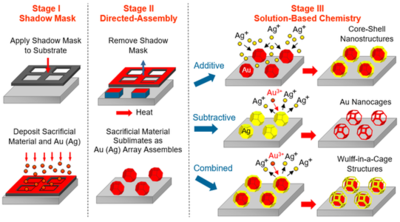
Schematic of the three stage synthesis strategy as it pertains to the synthesis of substrate–based nanostructures comprised of Au and Ag.
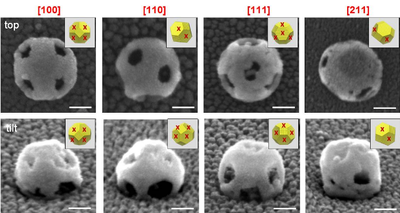
Hollow metal nanocages formed through subtractive galvanic replacement reaction which hollow out preformed Ag templates as a Au shell is simultaneously deposited on the template surface.
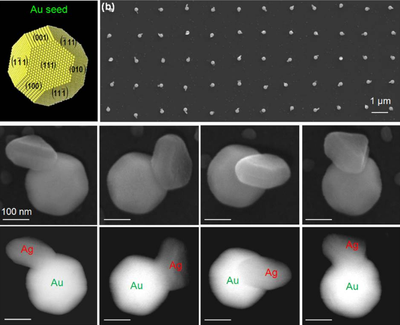
Au-Ag nanostructures formed through additive processes which result from the heterogeneous nucleation of Ag onto preformed Au templates (slow kinetics).
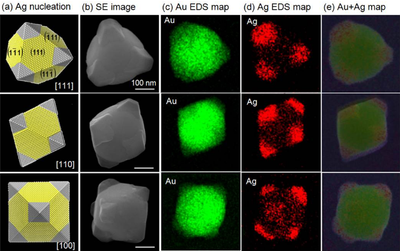
Au-Ag nanostructures formed through additive processes which result from the heterogeneous nucleation of Ag onto preformed Au templates (moderate kinetics).
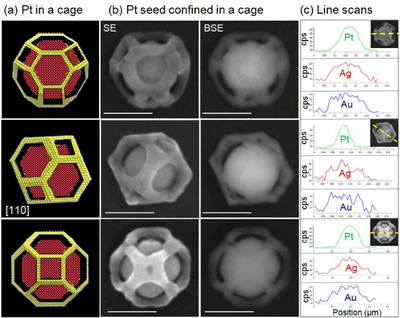
Caged nanostructures formed through the epitaxial deposition of Ag onto Au templates followed by the galvanic replacement of Ag with Pt.